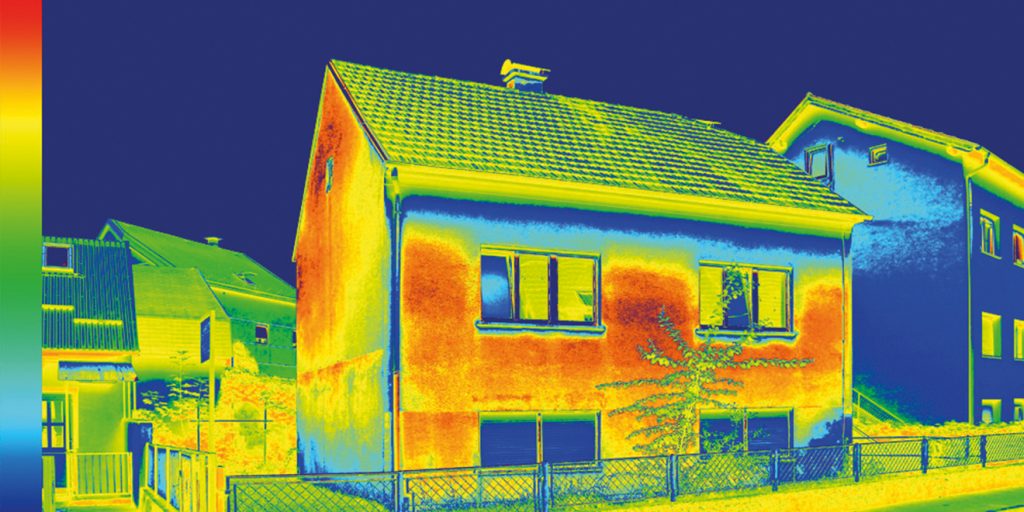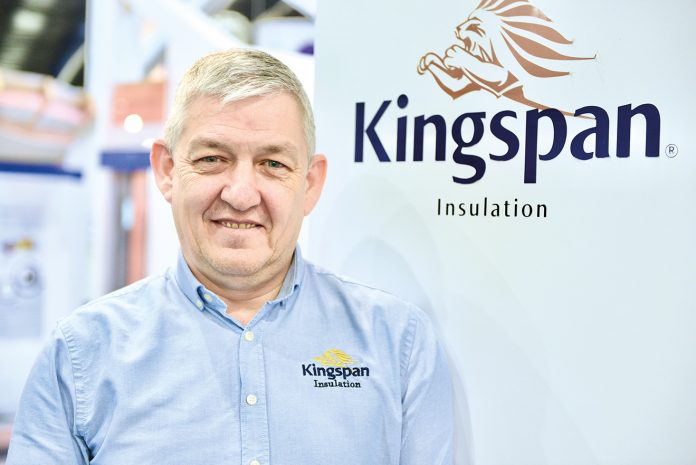The road to zero…
It might sound like a contradiction in terms, but do we need a new approach to retrofit in Northern Ireland? Could our drive towards energy efficiency be, well, more efficient? The governments in London and Dublin have both committed to a target of zero carbon by 2050, with retrofitting a crucial component of their respective strategies. The methodology for achieving that common goal, however, is very different. Northern Ireland is, in many respects, still playing catch-up with the Republic of Ireland’s retrofitting a more established, developed, and joined-up scheme. To assess both approaches to bringing new technology to old systems, NI Builder sought the opinion of an expert in the field, a man who has worked in the insulation business for nearly three decades.
Educated at Royal School Armagh (he lives outside the cathedral city with his wife and two children), Andrew Rennie continued his studies in England before returning home. “I began working in the insulation business in 1993, selling Expanded Polystyrene Insulation to Builders and Builders Merchants in Northern Ireland. The market at this stage
was strong.
Standard products were 60mm EPS board for the walls and 50mm EPS board for the floors, and with everyone using the same type of insulation, the only question was what price it was!” Appointed Sales Manager for Northern Ireland in 2000, Andrew was then handed responsibility for the entire island in 2009, it was a takeover two years later that set him on the path to retrofit. “In 2011 our company was bought by Kingspan Insulation, and I have been with the Kingspan team ever since,” Andrew explained.
“Shortly after the acquisition, Kingspan Retrofit was set up. Its main objective is to look at opportunities to insulate and upgrade the energy efficiency of existing properties as well as new builds.” With his experience in insulation, the transition to retrofit was always destined to be a smooth one. “Firstly the products we were using migrated across from new build to retrofit with relative ease. In the early days of retrofit, the emphasis was on single measures like cavity wall or loft insulation. As retrofit grew into a more all-encompassing energy saving model, we were able to learn and grow at the same time. Insulation remains an essential element of any energy upgrade.”

A changed landscape…
The rise in environmental awareness, allied to soaring energy bills, has enhanced retrofit’s profile in the industry. Changes to guidelines plus increased investment in, and development of renewable technologies then changed the landscape further. “The key drivers in our business are building regulations,” said Andrew.
“Construction of new builds and retrofit projects need to meet at least the minimum requirements in terms of energy performance. Revised building regulations are making our homes more energy-efficient and specifiers have played a key role in going beyond these minimum requirements. The most significant change we have seen is the rise of renewable technologies. Technologies like heat pumps, solar photovoltaic systems, and mechanical heat recoveryventilation systems all use electricity rather than oil or gas and represent a change away from our reliance on fossil fuels. Whilst these technologies will renew and create energy, it is essential to limit the amount of energy used in the first place by ensuring we have sufficient levels of insulation.”
So how does the approach to retrofit differ between Northern Ireland and The Republic of Ireland? “The retrofit business in the Republic is a more mature business than in Northern Ireland. However, as there is very little difference in the housing stock, many of the measures will remain the same. The Republic has the added advantage of having a single body (SEAI) responsible for energy efficiency in existing houses with input on standards, policies and also providing grant support where appropriate.”
South of the border the approach certainly appears more joined up. In contrast to that single port of call, the Sustainable Energy Authority of Ireland, interested parties here can find themselves shimmying between places like the Northern Ireland Sustainable Energy Programme, the Energy Saving Trust NI, Bryson Energy’s advice line, in search of grant aid. Northern Ireland does not even enjoy parity with other parts ofthe UK. Ironically named The Green Deal, which helps you make energy saving improvements to your home and find the best way to pay for them, is not available here.

Time to future-proof…
There’s no disputing that the UK government sees a role for retrofitting in its pursuit of the zero carbon target. But has it gone far enough? Andrew Rennie explains: “In the Republic of Ireland, the government has published a Climate Action Plan. It identifies half a million houses that need retrofitting and will contribute to meeting the 2050 target outlined in the action plan. From November 1, 2019, nZEB or ‘Nearly Zero Energy Buildings’ have become mandatory in Republic of Ireland. Nearly Zero Energy Buildings defines buildings with very high energy performance. It would mean a house built to the Republic of Ireland’s building regulations could be 40% more energy-efficient than a home built to the Northern Ireland regulations. We are actually still building new houses today in NI that will need retrofitting in the next few years.”
The SEAI model simplifies the process of securing funding and completing retrofit by partnering with companies like Kingspan. As an approved counter-party, whose systems and controls are vetted and approved by the SEAI, Kingspan Retrofit can make the grant application and remove the onus on the homeowner to provide the required paperwork.
“There are several different grant schemes currently available through SEAI. Depending on personal circumstances, grants can range from 30% of the total to 100% of the cost for the most vulnerable members of society. The most popular scheme is the Better Energy Homes scheme where a private homeowner can have upgrade works carried out by a registered contractor and claim a grant for doing so. Homes constructed before 2006 can avail of a grant for fabric measures, and 2010 is the threshold for renewables.”
Retrofit solutions include external and internal wall insulation, pumped cavity wall and attic insulation, solar thermal systems and solar photovoltaic panels, heat pumps that harness energy from the air outside your home, boiler and heating controls. Cherry picking from this diverse selection was once common, however that is no longer the case, as Andrew explains: “The retrofit business has significantly developed in the last few years. The most energy-efficient upgrades will need a whole-house approach. The best example of this is the SEAI Deep Energy Efficiency Programme, a pilot scheme in the Republic over the last three years. This programme uses a range of measures to bring badly performing houses up to a BER Standard of A3. Hopefully, we will be able to use the information gained from this to form a blueprint for future works.”
For further information on any of the above please visit www.kingspanretrofit.com








